#1 Easy Guide: Danish Numbers & Counting
Original blog post: https://ling-app.com/da/danish-numbers/ (with audio🔊)

Alright so you’re off on a journey to the land of many names and need to learn Danish numbers and how to count in Denmark!
You might be using some useful logic here and thinking Danish comes from the country Dane. Makes sense because they speak Spanish in Spain and Swedish is spoken in Sweden. However, things are not so straight forward with Danish.
Danish is actually spoken in Denmark which is home to the Danish people who also refer to themselves as Danes. Can you say confusing?
This ‘confusion’ also shows up in the Danish numbering system. Counting in the Danish language isn’t as simple as it is with other languages.
Learning a new language, especially learning how to count in Danish, is an important thing to learn. You’ll literally need to use this skill every day, so let’s get going and learn the process of counting in Danish!
Counting In Danish — Numbers 0–20

Maybe it’s just my ears, but when I hear the pronunciation of 0–20 in Danish, they sound similar to English numbers. This is the less complicated portion of learning how to count in The Netherlands.

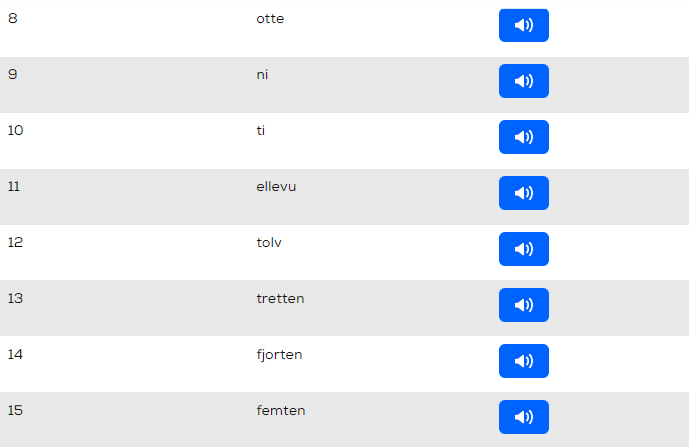

Ordinal Numbers In Danish
Days Of The Month

This information is useful for when you are discussing the date.
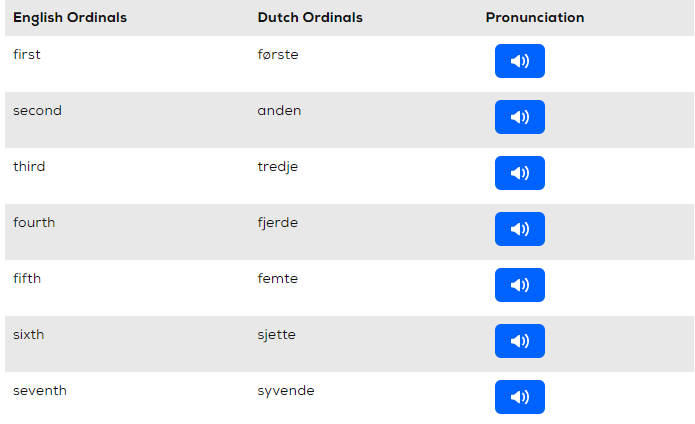


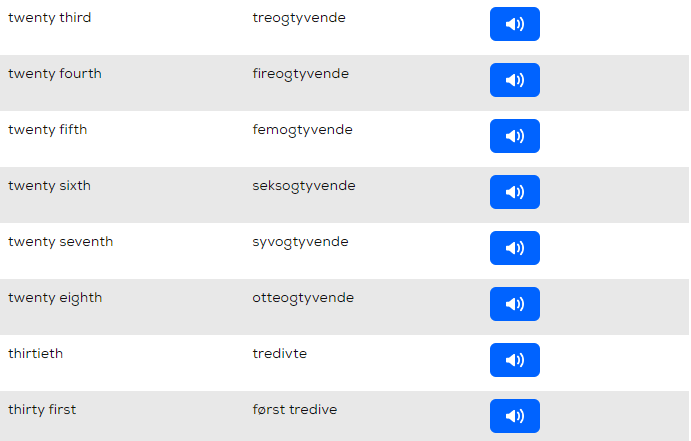
Ordinal Tens
You may need this information to talk about birthdays and how old people are turning.

Danish Numbering System
Here, we’re going to try to attempt to answer the question:
Why Are Danish Numbers So Weird?
Unsure yet of how they’re so weird? Well take a quick scroll below and you’ll see what we mean.
The Danish number system is not a base ten system, rather it operates on a system called vigesimal. It’s called vigesimal because it’s a base 20 system. That means the base unit is 20. To further understand lets look at the look at the old word in Danish sinde which means multiply or times.
A base 20 number system uses multiples of 20. Here are some examples of what that looks like:
- 60 is tres = coming from three twenties (tre x tyvea or 3 x 20)
- 80 is firs = coming from four tyve (fire x tyve or 4 x 20)
Multiples of 20 are easier to understand, but let’s see what happens when a number is not easily divisible by 20.
- 50 is halvtreds and is determined by how many 20’s fit into 50, which is 2 1/2. The rest of the number is made up of half of 20. Therefore 50 = 2 x 20 + half of 20
- 70 is halvfjerds and is determined by how many 20’s fit into 70, which is 3 1/2. The rest of the number is made up of half of 20. Therefore 60 = 3 x 20 + half of 20
- 90 is halvfems and is determined by how many 20’s fit into 90, which is 4 1/2. The rest of the number is made up of half of 20. Therefore 80 = 4 x 20 + half of 20
So when did this strange choice to use base 20 come about? Well, it remains a historical mystery. No one really understands why around the year 1300, the Danes decided to change to this number system.
Let’s see what this looks like when we count by tens in Danish if we calculate a different way to get the same end result.
Counting In Danish — Tens 10–100



Danish Fractions

Knowing how to say “half” or “quarter” in Danish for example is crucial, especially when it comes to saying numbers in Danish.

Counting In Danish — Numbers 21–30



Danish Numbers 31–40


Count In Danish 41–50


Numbers In Danish 51–60

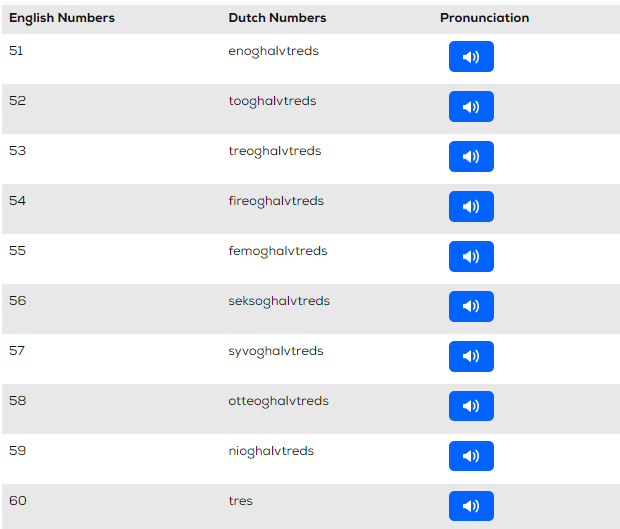
Count In Danish 61–70


Danish Numbers 71–80

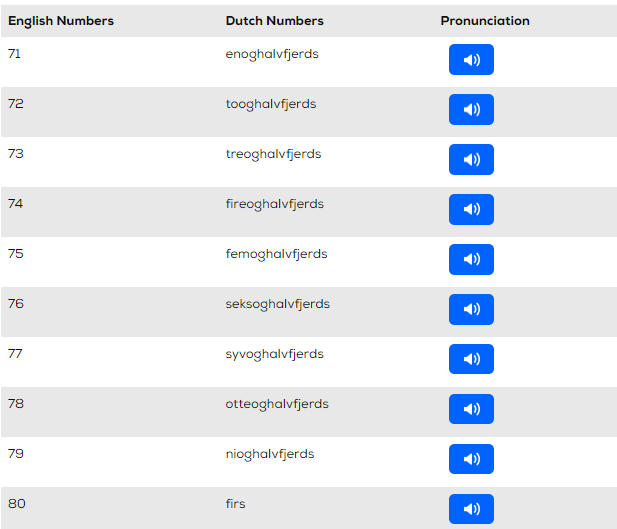
Danish Numbers 81–90


Danish Numbers 91–100


How To Say Or 43 Numbers Greater Than 100

Sometimes numbers in Danish are written with a space like tre hundrede (300), fire hundrede (400) or tre tusinde (3,000). Technically this isn’t correct but can make it more useful to read numbers in Danish. Because we’re sticklers for perfection, we’ll show the numbers as they should be, sans space.


Learn Even More Danish
Now that you’ve learnt the basics of Danish numbers, why not strap in and continue learning even more!
Knowing how to count in Danish is important but imagine how much more you can communicate in Denmark if you knew more?! Check out how to describe things in color and importantly, how to introduce yourself. You’ll learn loads of useful vocabulary and phrases as well!

Our friendly mascot — Ling — will guide you to learn Danish or any of the 60 plus languages that we offer. You’ll learn to read, write, speak and pronounce new languages perfectly with Ling.
We’ll have you fluent in only 10–15 minutes a day. Try it now!
